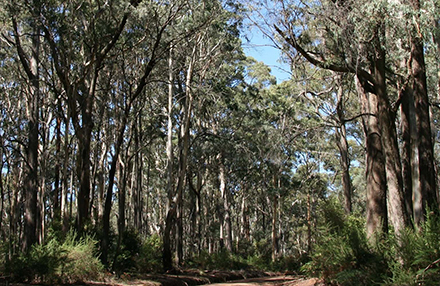It could be argued, mischievously perhaps, that loopholes are sometimes deliberately included in government-created rules and regulations to provide some wriggle room for various parties.
Why else would a loophole exist in the Sustainable Forests Act which has enabled activist vigilantes to devastate the livelihoods of regional Victorians?
It is a silly proposition of course to suggest loopholes are “created”, but once identified, why aren’t they shut down as quickly as practicable?
As Forest and Wood Communities Australia pointed out this week, unlike the Environment Protection Act 2017 (Section 347), the Sustainable Forests Act fails to specify just who has the authority to take legal proceedings for even the most minor breaches.
“It’s a loophole which was exploited in the Supreme Court at the end of last year as part of a well-orchestrated attack on timber communities by self-interested activist groups,” FWCA managing director Justin Law said.
“It has crippled timber supply when we need it most and is putting hundreds of Victorians out of work as contractor crews are stood down and mills close.”
Mr Law suggests that by leaving open the back door and giving power to vigilante anti-forestry activists, the State Government is failing to keep its promise of ensuring supply until 2030 unhindered by vexatious litigation.
“Or is it part of the plan to get activists to do their dirty work?” he asked.
Suddenly, the original thought – that loopholes are created, or even ignored, to create wriggle room – is not as silly as it sounds.
Especially when, as Mr Law points out, it could be fixed by simply introducing the appropriate clause from the Environment Protection Act into the Sustainable Forests (Timber) Act 2004.
The Opposition in Victoria is currently drafting legislation to block anti-logging activists using the courts to delay or halt native timber harvesting.
Such legislation is desperately needed. VicForests currently faces 10 court actions by environmental groups, with one of those leading Supreme Court Justice Melinda Jane Richards to last month slap injunctions on any coupe where a Greater Glider possum has been spotted.
But, sadly, the chances of such legislation ever going the distance are moot while Labor is in power in Victoria.
The State election, due in November, may hold a solution, but it’s going to take a lot of work.
Meanwhile the Victorian Government seems to be maintaining its course of restricting industry access to state forests.
It announced this week it was “taking the next steps to engage Victorians in determining new conservation, recreation and tourism opportunities in Immediate Protection Areas’’.
The Immediate Protection Areas − made up of more than 146,000 hectares of state forest located in Mirboo North, Strathbogie Ranges, Central Highlands and East Gippsland − were protected from timber harvesting in 2019 due to their precious biodiversity.
The Eminent Panel for Community Engagement, established to lead conversations with Victorian communities on the future care and management of the land, will work with the Victorian Environmental Assessment Council which is already assessing the environmental, recreation and other values in Immediate Protection Areas in Mirboo North and Strathbogie Ranges. Work in the Central Highlands and East Gippsland will start in mid-2022.
The panel will present a report and recommendations to the government on Mirboo North and Strathbogie Ranges in mid-2022. Community engagement on Central Highlands and East Gippsland will begin later in 2022.
Since 2019 the Victorian Government has added more than 250,000 hectares of protected forests in Victoria – including 96,000 hectares of Immediate Protection Areas, 65,106 hectares for the new Central West National Parks and 90,000 hectares of old growth.
Make of that what you will. It would be wrong to suggest that the timber industry should be allowed free reign in Victoria’s State forests.
Restrictions are necessary.
But this latest step does seem a little like the State Government wants to restrict the State’s native forestry industry to death.







